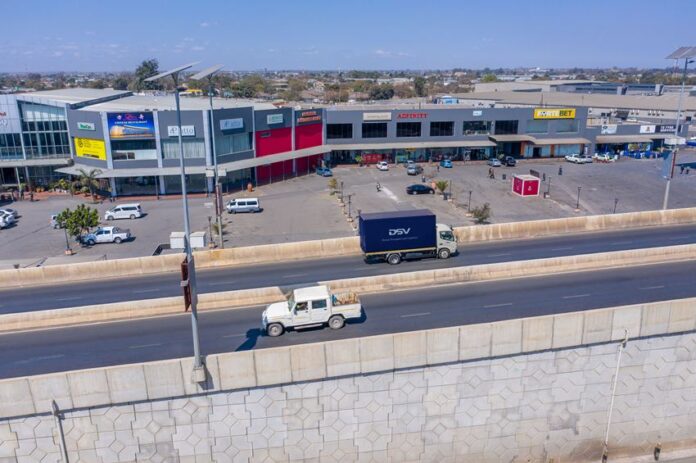Logistics volumes into and out of Zambia have grown consistently over the last ten years, with the bulk of cargo movement being driven by capital expenditure projects for mines, growing mining sector activity leading to increased distribution to key markets such as India and China, and infrastructure development.
However, DSV Zambia MD Kris van Heerden said despite the infrastructure improvements, the road and rail infrastructure could not meet existing demand let alone forecast growth – and this hinted at the opportunities in the country once infrastructure matched economic potential.
Transport’s contribution to GDP has grown, if unevenly, over the last ten years shows, as the graph below shows, and it reached a high of 1678.50 ZMW (Zambian Kwacha) in the third quarter of 2021, before falling to 1459 ZMW Million in the fourth quarter of 2021 – but still recording the highest fourth quarter of the decade.
 The rising price of copper over the past 18 months and the relaxing of tax liabilities by government for mines had positively impacted mining production and led to increased exports. “At the same time, mines were investing in increasing production capacity, and this automatically impacted on inbound cargo flow within Zambia for capex investments of the mines.”
The rising price of copper over the past 18 months and the relaxing of tax liabilities by government for mines had positively impacted mining production and led to increased exports. “At the same time, mines were investing in increasing production capacity, and this automatically impacted on inbound cargo flow within Zambia for capex investments of the mines.”
Van Heerden pointed to First Quantum Minerals, which was investing US$1.2 billion to boost productions of copper and nickel for export, as evidence of growing investor confidence in the country’s mining sector and positive reaction to the government’s Economy Recovery Programme.
The Zambian economy was projected to grow 2.0% in 2022, underpinned by recovery in the mining, tourism, and manufacturing sectors, all of which are fueling demand for logistics services. Van Heerden said DSV Zambia was active in the Automotive, healthcare and Pharma, Energy and Mining + Projects verticals.
Van Heerden said there had been improvements in many parts of the country and government had both recognized the importance of the transport sector to the economy and was committed to entering public private partnerships as a route to maintaining and constructing transport infrastructure.
Both Kenneth Kaunda and Simon Mwansa Kapwepwe International airports were upgraded to international standards in 2021, and there have been improvements to both road and rail networks.
The Lusaka Decongest Project, which included construction, rehabilitation, and expansion of roads, has reduced travel times in the capital.
“Importantly, the recently opened 923-meter Kazungula bridge linking Botswana and Zambia over the Zambesi River, along with one-stop border posts on each side, has made regional trade that much easier, providing alternative routes for SADC movements into, out of and through Zambia. Roads were being rehabilitated and upgraded and new roads built to improve trade corridors between mines, cities, towns and rural areas and neighboring countries”, he said.
In addition to this infrastructure development, the Zambia Revenue Authority (ZRA) had introduced, including the two international airports, and the Kitwe, Chirundu, Kazungula, Nakonde and Katimo border posts.
The implementation of compulsory pre-clearance at all the borders has ensured that goods move seamlessly into Zambia.
The Zambia Revenue Authority has also introduced the Customs Accredited Client Programme (CACP) which facilitates almost “risk free” movement into Zambia once clients have been fully audited and accredited by the ZRA.
 DSV Zambia is part of DSV – Global Transport and Logistics, which manages supply chain solutions for companies from 90 countries and has been operating in Zambia for 30 years.
DSV Zambia is part of DSV – Global Transport and Logistics, which manages supply chain solutions for companies from 90 countries and has been operating in Zambia for 30 years.


